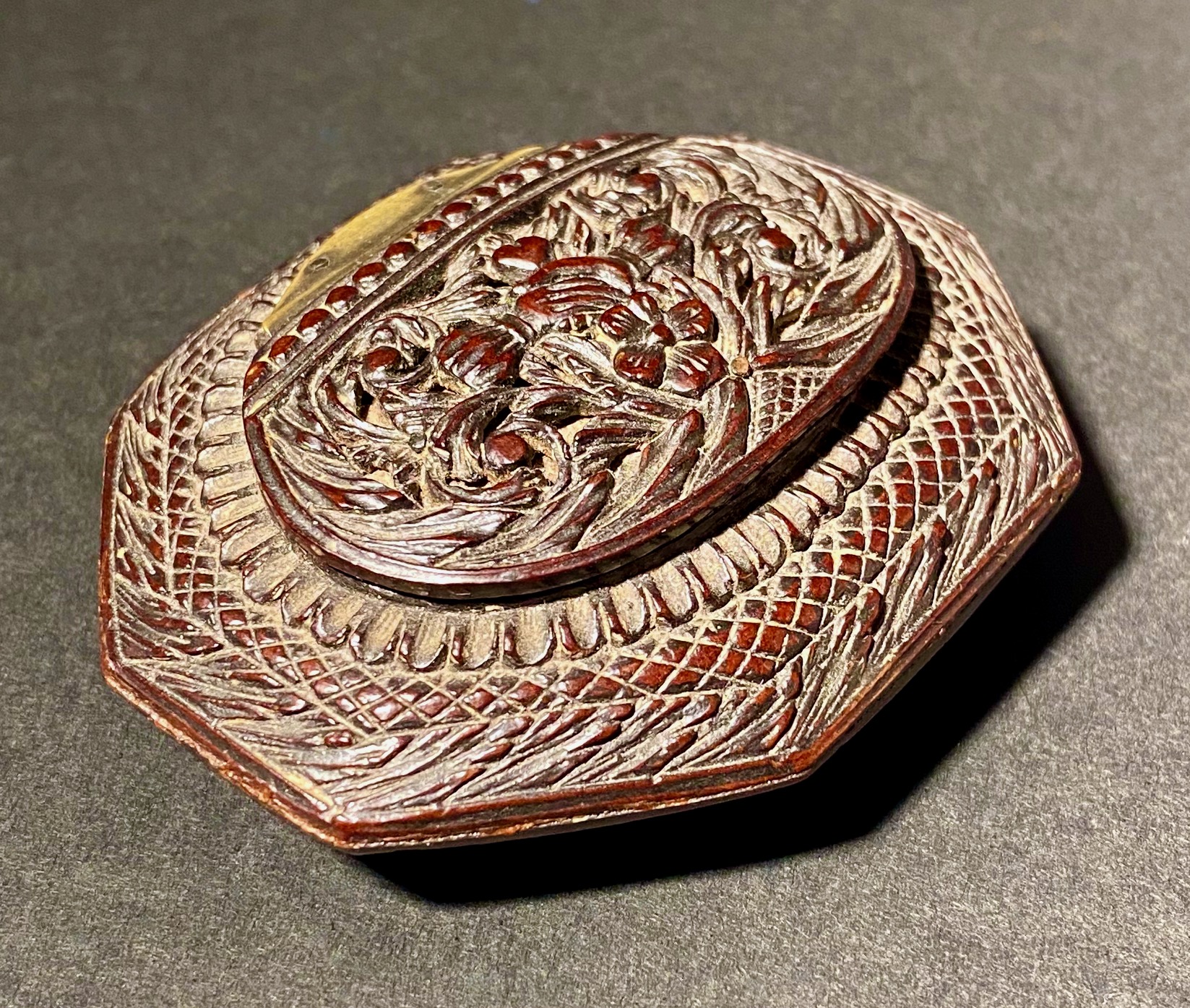

Title: 18th-Century Antique Hand Carved Wooden Snuffbox
Shipping: $29.00
Artist: N/A
Period: 18th Century
History: Art
Origin: North America > United States
Condition: N/A
Item Date: N/A
Item ID: 528
This is a truly exceptional and one-of-a-kind 18th-century antique hand-carved two-sided decorative designed wooden snuffbox. Carved in amazing detail. Such boxes were meticulously crafted for the individuals who created them. In the 18th century, possessing master craftsmanship skills was of paramount importance. Given the scarcity of purchasing options, particularly in rural America, during that era, individuals had to rely on their own skills for creating items. The dimensions of this remarkable piece are 2 1/4 inches in width and 2 1/2 inches in length, with an approximate depth of 1 inch. Despite its age, the condition remains excellent. There is a split along the backside that has been expertly repaired, adding to the charm of the piece due to its historical significance. During the 18th century, snuff, finely ground tobacco meant for inhalation, gained immense popularity as a fashionable and social practice. It was considered a luxury item that transcended class barriers, and its consumption was associated with sophistication and refinement. Snuff-taking was not only a means of tobacco consumption but also a form of self-expression and status symbol. In America, snuff became a significant cultural phenomenon, reflecting its importance in Europe. As the colonies were influenced by European trends, snuff-taking became a way to emulate the habits of the Old World elite. The practice allowed individuals to partake in a global trend and display their knowledge of refined European customs. The concept of crafting specialized containers to hold and showcase snuff emerged as a natural progression of this trend. These containers, known as snuffboxes, were meticulously designed and often made from exquisite materials such as precious metals, ivory, enamel, and, as your earlier example mentioned, hand-carved wood. Snuffboxes were not just functional items; they became intricate works of art, reflecting the aesthetic sensibilities of their owners. For those who owned or aspired to own such containers, snuffboxes were more than just receptacles for tobacco. They were tokens of style and status, often exchanged as gifts among the elite. Snuffboxes were adorned with intricate engravings, miniature paintings, and decorative motifs, each reflecting the owner's tastes and personality. These containers served as conversation pieces, and displaying one's snuffbox signaled a shared cultural affinity and an appreciation for luxury. As the 18th century progressed, snuff-taking and the use of snuffboxes became intertwined with social rituals. Offering a pinch of snuff to a guest was not just a polite gesture; it was a ritual that demonstrated hospitality and camaraderie. This practice also provided an opportunity for individuals to exhibit their prized snuffboxes, showcasing their refinement and social standing.
The 18th century marked a period when snuff-taking transcended its utilitarian origins and evolved into a cultural phenomenon of sophistication and elegance. The crafting of elaborate snuffboxes to contain and display snuff mirrored this societal shift, emphasizing the importance of aesthetics and social status. These containers became tangible symbols of an individual's participation in a global trend and their alignment with the refined customs of the era.